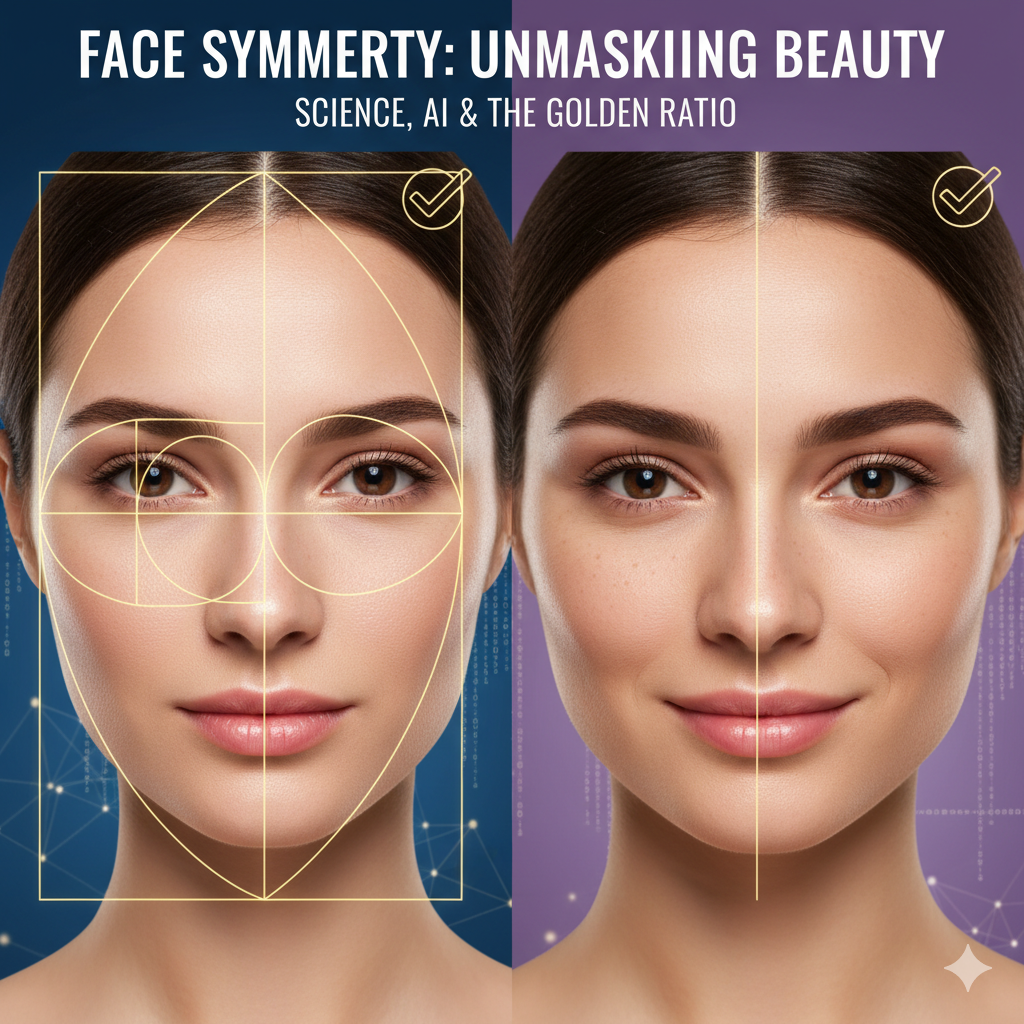“`html
Introduction: The Role of Physical Attraction in Relationships
Physical attraction is often cited as a critical element in the initiation of romantic relationships. From an evolutionary perspective, physical appearance has served as a proxy for genetic fitness and overall health, guiding individuals towards potential partners who may enhance the likelihood of successful reproduction. This biological underpinning explains why physical traits such as symmetry, clear skin, and other indicators of health can be universally attractive.
Societal influences further shape our perceptions of attractiveness. Media representations, cultural norms, and societal expectations dictate what is considered attractive, often perpetuating certain beauty standards. These societal constructs can influence individual preferences and affect the initial stages of romantic interest. For instance, features that are celebrated in media can become more desirable, thereby influencing the criteria people use to select potential partners.
The initial spark of physical attraction is frequently the catalyst that brings two individuals together. This immediate allure can lead to further interactions, providing the opportunity for deeper connections to form. However, while physical attraction might be the initial draw, it is the balance between physical and emotional attraction that sustains a relationship over time. Emotional attraction, which encompasses personality traits, shared values, and mutual interests, becomes increasingly important as a relationship progresses.
Therefore, while the emphasis on physical attraction is undeniable in the early stages of a relationship, it is crucial to recognize the evolving nature of attraction. A successful relationship relies not solely on physical appearance but on a harmonious blend of physical and emotional connections. By understanding the multifaceted role of attraction, individuals can better navigate the complexities of forming and maintaining healthy, fulfilling relationships.
“`
The Science Behind Physical Attraction
Physical attraction is a complex interplay of biological and psychological factors that have been the subject of extensive research. One of the key elements in physical attraction is symmetry. Studies have shown that individuals with symmetrical faces are often considered more attractive. This preference is thought to be rooted in evolutionary biology, where symmetry is an indicator of genetic health and reproductive fitness.
Pheromones also play a significant role in physical attraction. These are chemical signals secreted by individuals that can influence the behavior and physiology of others. Research indicates that pheromones can affect our perception of attractiveness, often in ways that we are not consciously aware of. For example, certain pheromones can enhance the perception of masculinity or femininity, thereby increasing attraction.
The psychology of attraction further complicates the picture. Psychological theories suggest that we are drawn to individuals who possess traits that we find desirable or that complement our own. This can include factors such as confidence, kindness, and even social status. The halo effect, a cognitive bias where we assume that someone who is physically attractive also possesses other positive traits, also plays a significant role in how we perceive attractiveness.
Various studies have underscored these findings. For instance, research conducted at the University of New Mexico found that men and women tend to prefer mates with symmetrical features and healthy skin, both of which are indicators of good health. Another study published in “Psychological Science” highlighted that individuals often choose partners with similar levels of attractiveness, a phenomenon known as assortative mating.
In summary, the science behind physical attraction is multi-faceted, involving a blend of symmetry, pheromones, and psychological factors. Understanding these elements can provide valuable insights into why certain physical traits are universally appealing and how they contribute to the formation of successful relationships.
Cultural and Societal Standards of Beauty
Beauty standards are deeply rooted in cultural and societal norms, which vary significantly across different regions and historical periods. In contemporary society, the influence of media plays a pivotal role in shaping these standards, often promoting a homogenized ideal of beauty that can be hard to attain. For example, Western media frequently portrays slim, tall, and clear-skinned individuals as epitomes of beauty, whereas other cultures may prioritize different physical attributes. In parts of Africa, fuller body figures are often celebrated, signifying wealth and health. Likewise, in some Asian cultures, fair skin is traditionally considered a hallmark of beauty, a notion that has historical roots and continues to influence modern beauty practices.
The impact of these standards extends beyond individual self-perception to affect relationship dynamics. People internalize societal ideals of beauty, which can either bolster or undermine their self-esteem. High self-esteem can lead to more confident social interactions and healthier relationships, while low self-esteem can have the opposite effect. When individuals feel pressured to conform to specific beauty ideals, it can create stress and anxiety, potentially straining romantic relationships. A partner’s appreciation or criticism of one’s appearance can significantly influence their self-worth and, consequently, the overall health of the relationship.
Historical changes in beauty standards also illustrate how fluid and context-dependent these ideals can be. For instance, during the Renaissance, robust and curvaceous figures were celebrated in Western art and society, a stark contrast to today’s preference for slender bodies. These shifts highlight that beauty is not a fixed concept but one that evolves with changing cultural, social, and economic conditions. Understanding these dynamics can help individuals and couples navigate the complexities of beauty standards, fostering a more inclusive and supportive approach to physical appearance within relationships.
The Importance of Self-Presentation
Self-presentation plays a critical role in forming and maintaining successful relationships. Grooming, fashion, and personal hygiene are key elements that contribute to creating a positive first impression. These aspects of self-care not only affect how others perceive us but also influence our own self-esteem and confidence.
Firstly, grooming is essential. Regularly maintaining a clean and polished appearance signals that you take pride in yourself and are considerate of those around you. This includes basic practices such as regular haircuts, nail care, and skin maintenance. Investing time in grooming routines can significantly enhance one’s overall appearance and make a lasting impact on others.
Fashion is another crucial aspect of self-presentation. Dressing appropriately for different occasions and understanding what styles suit your body type can amplify your attractiveness. While trends come and go, finding a personal style that reflects your personality and makes you feel comfortable is vital. Wearing clothes that fit well and are clean can have a substantial effect on how you are perceived by potential partners.
Personal hygiene cannot be overlooked. Basic habits such as daily showers, using deodorant, and maintaining oral hygiene are fundamental to presenting oneself well. Neglecting personal hygiene can be off-putting and may hinder the development of a relationship. Good hygiene practices demonstrate respect for yourself and those you interact with.
Beyond the immediate benefits of looking good, there are significant psychological advantages. Investing in your appearance can boost your self-confidence and self-worth. When you feel good about how you look, it positively affects your interactions and can lead to more meaningful connections.
Self-care is an integral part of maintaining a healthy relationship. It involves taking the time to look after your physical and mental well-being. By prioritizing self-care, you signal to your partner that you value yourself, which can foster mutual respect and admiration. In essence, self-presentation is not just about outward appearances but also about nurturing a positive self-image that can lead to more successful and fulfilling relationships.
The Impact of Looks on Initial Attraction
Physical appearance plays a crucial role in the realm of initial attraction. This notion is supported by various speed dating studies, which reveal that individuals often make quick judgments based on looks within the first few seconds of meeting someone. These snap decisions can significantly influence the likelihood of pursuing a romantic connection further. For instance, during speed dating events, participants typically rely heavily on visual cues to decide whether they want to continue engaging with a potential partner.
Online dating profiles further highlight the importance of looks in initial attraction. Profiles with appealing photos tend to receive more attention and messages than those without. The visual appeal of a profile picture can pique interest, prompting users to read the accompanying bio and consider a potential match. This phenomenon underscores the significance of selecting a high-quality, representative photo when creating an online dating profile. Thus, the visual element often serves as a gateway to deeper interactions.
Photos in online dating can make or break a first impression. An attractive photo can create a positive bias, encouraging further conversation and interest. Conversely, a less flattering photo might result in a missed opportunity, regardless of the person’s other qualities. This initial impression, based largely on looks, can set the tone for subsequent interactions, either facilitating a positive engagement or hindering future potential.
While physical appearance is not the sole determinant of a successful relationship, its impact on the early stages of dating is undeniable. First impressions, often influenced by looks, can shape the direction of a budding relationship. Whether through speed dating events or online dating platforms, the emphasis on visual appeal underscores the importance of looks in establishing initial attraction.
Beyond Looks: Building Emotional and Intellectual Connections
While physical attraction often serves as an initial spark in a relationship, it is far from the sole factor that sustains a long-term, successful partnership. Emotional intelligence plays a pivotal role in creating a strong foundation. Couples who are adept at understanding and managing their own emotions, as well as empathizing with their partner’s feelings, tend to navigate conflicts more effectively. This emotional attunement fosters trust and intimacy, essential components of a lasting relationship.
Shared values also contribute significantly to relational success. When partners align on core beliefs and life goals, they build a sense of unity and purpose. For instance, couples who prioritize family, have similar financial philosophies, or share a commitment to personal growth often find that these commonalities enhance their bond. Shared values act as a guiding framework, helping partners make decisions that are congruent with their long-term vision for the relationship.
Intellectual compatibility is another crucial element. Engaging in stimulating conversations, sharing interests, and challenging each other’s perspectives can deepen a relationship. Intellectual engagement not only keeps the relationship dynamic but also fosters mutual respect. For example, couples who enjoy debating current events, exploring new hobbies together, or supporting each other’s professional ambitions often find a deeper level of connection beyond the physical realm.
Real-life examples illustrate how relationships thrive when built on emotional and intellectual foundations. Consider a couple where one partner’s emotional support during a challenging time solidified their bond, or another where shared passion for learning led to mutual growth and fulfillment. These scenarios highlight that while looks may draw individuals together initially, it is the emotional and intellectual connections that sustain and enrich the partnership over time.
The Role of Confidence and Self-Esteem
Confidence and self-esteem are fundamental components of romantic relationships, both being significantly influenced by one’s appearance. How individuals perceive themselves often shapes their behavior in dating scenarios, impacting everything from initial interactions to long-term relationship satisfaction. The way we look can either boost or diminish our self-confidence, subsequently affecting our ability to communicate effectively and connect with potential partners.
Self-perception plays a pivotal role in dating behavior. Individuals who feel good about their appearance are more likely to exude confidence, making them more attractive to others. This confidence translates into better communication skills, as they are less likely to be hindered by insecurities. Effective communication is crucial for developing mutual understanding and trust, which are essential for a successful relationship. Conversely, those with low self-esteem may struggle with expressing themselves, leading to misunderstandings and dissatisfaction.
Furthermore, satisfaction within a relationship is often tied to how both partners view themselves and each other. When both individuals have a healthy level of self-esteem, they are more likely to support and uplift one another. This mutual support fosters a positive and nurturing environment, promoting long-term happiness and stability. On the other hand, low self-esteem can lead to dependence, jealousy, and conflict, which may undermine the relationship’s foundation.
Building self-confidence and improving self-esteem can significantly enhance one’s dating life and overall relationship quality. Engaging in regular physical activity, maintaining a balanced diet, and practicing good hygiene can improve appearance and, consequently, self-perception. Additionally, setting and achieving personal goals, seeking therapy or counseling, and surrounding oneself with supportive friends and family can bolster confidence and self-esteem. By focusing on these areas, individuals can cultivate a positive self-image, leading to more fulfilling and successful romantic relationships.
Conclusion: Striking a Balance Between Looks and Substance
As we have explored throughout this blog post, the significance of physical attraction in a relationship cannot be understated. Looks do play a crucial role in the initial stages of forming connections, often serving as the gateway to deeper interaction. However, while the importance of physical appearance is undeniable, it is equally imperative to recognize that emotional and intellectual connections form the bedrock of a lasting and fulfilling relationship.
Physical attraction may ignite the spark, but it is shared values, mutual respect, and emotional intimacy that sustain the flame. Building a relationship solely on looks is akin to constructing a house on a weak foundation; it may stand for a while, but it is unlikely to withstand the test of time. Emotional depth, intellectual compatibility, and shared life goals are the pillars that uphold a successful partnership.
Maintaining a balanced perspective on looks and substance requires conscious effort and self-awareness. It involves appreciating the aesthetic appeal of your partner while simultaneously valuing their inner qualities. Engaging in open communication, showing empathy, and nurturing each other’s personal growth are essential practices in fostering a well-rounded relationship. By doing so, partners can create an environment where both physical and emotional needs are met, leading to a more enriched and resilient bond.
In the quest for a successful relationship, it is crucial to remember that while looks may attract, it is the substance that truly connects. By striking a harmonious balance between physical attraction and meaningful connection, couples can enjoy a relationship that is not only visually appealing but also deeply satisfying and enduring. Ultimately, it is this equilibrium that lays the foundation for a happy and successful partnership.




